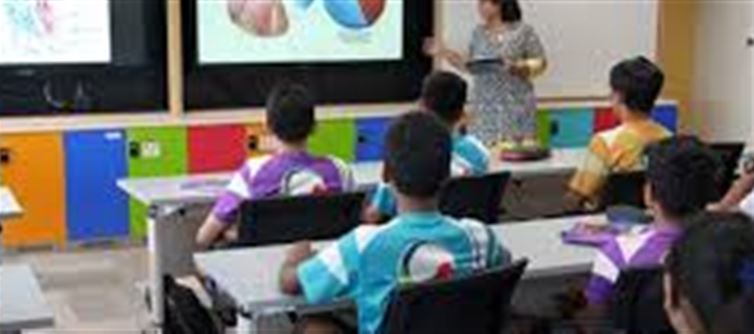
Artificial Intelligence is no longer a futuristic concept—it’s already walking into classrooms. From generating quizzes in seconds to customising lessons for every student, AI is becoming a digital teaching assistant. But will it eventually replace educators, or will it simply empower them? Leading education experts believe the answer lies in balance.
Here’s what they had to say:
1. AI is a Classroom Assistant, Not a Replacement
Dr. Umesh Dutta, CEO, Manav Rachna Innovation & Incubation Foundation explains: AI is here to support teachers, not replace them. By handling repetitive tasks like preparing lesson plans or drafting practice questions, AI frees up teachers’ time. That time can then be invested in what truly matters—mentorship, critical thinking, and emotional guidance—areas where human presence is irreplaceable.
2. Smarter, More Personalised Learning
AI brings a new level of personalisation to classrooms. It can track progress in real time, identify weak areas, and recommend practice materials. For example, a student struggling with calculus could get step-by-step AI-guided practice until they master the concept.
It can even grade objective papers instantly and provide structured feedback on essays, allowing teachers to focus on creative and higher-order feedback. The result? More efficiency for teachers and better learning for students.
3. Cutting Down the Admin Load
From grading assignments to managing attendance, AI can act like a behind-the-scenes administrator. Schools can even use AI to schedule parent-teacher meetings, prepare reports, and streamline paperwork. This shift allows teachers to spend less time on administration and more time inspiring students.
4. Bridging India’s education Gaps
With rural teacher shortages and diverse linguistic needs, india stands to gain immensely. AI-powered platforms can act as virtual tutors, delivering lessons in multiple languages and dialects. This makes education more accessible and inclusive, ensuring no student is left behind regardless of their geography or background.
5. Ethical Guardrails Are Crucial
Experts warn that AI comes with challenges. Since AI systems rely on student data, privacy concerns are real. If biases exist in the system, they can widen inequalities. That’s why ethical guidelines and strong teacher training are essential. technology must serve learning—not the other way around.
6. India’s Growing Role in AI-Driven Education
Nishtha Shukla Anand, director & Trustee at Shoolini University, highlights that india is quick to adopt technology. With a booming edtech sector, AI can reshape classrooms by making learning engaging, interactive, and personalised. Soon, we may see AI tools designed specifically for India’s diverse classrooms, breaking language barriers and delivering tailored education.
7. teachers Will Always Matter More
Dr. Raul V. Rodriguez, Vice-President, Woxsen University, sums it up: AI can grade, personalise, and streamline, but it can never replace empathy, creativity, and the human connection a teacher brings. A machine can generate answers, but only a teacher can spark curiosity, inspire dreams, and guide students through life.
✨ The Bottom Line:
Generative AI is best seen as a partner, not a rival. It can reduce workload, personalise learning, and expand access—but the soul of education will always rest with teachers. The real future lies in a teacher-AI partnership, where technology empowers educators to do what they do best: teach, mentor, and inspire.
Disclaimer:
The views and opinions expressed in this article are those of the author and do not necessarily reflect the official policy or position of any agency, organization, employer, or company. All information provided is for general informational purposes only. While every effort has been made to ensure accuracy, we make no representations or warranties of any kind, express or implied, about the completeness, reliability, or suitability of the information contained herein. Readers are advised to verify facts and seek professional advice where necessary. Any reliance placed on such information is strictly at the reader’s own risk..jpg)




 click and follow Indiaherald WhatsApp channel
click and follow Indiaherald WhatsApp channel